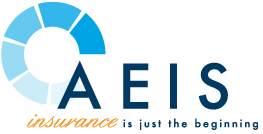What the 1095-C Codes Mean & How They Work
Employers that offer an employer-sponsored health insurance plan and who are considered applicable large employers (ALEs have 50 or more full-time and full-time equivalent employees total on average during the prior calendar year. Multi-employers or those with common ownership may be considered a control group by the IRS and may be counted together as one employer) are required to fill out a 1095 C form for each full-time employee, but not everyone knows what this document is or why it's important. IRS Form 1095-C is basically used to meet the Section 6056 large employer play or pay requirement and to help determine if an individual is eligible for a premium tax credit. It is the employer’s responsibility to complete the form for each eligible full-time employee, and they are required to send a copy to the employee and file a copy with the IRS. In addition to sending the 1095-C for each full-time employee to the IRS, an employer is also required to submit them with the 1094-C summation form. To best help you learn more about the process of filling one out, we've created this comprehensive blog post. We'll start by explaining how the 1095 C works, then go through each section in detail so you know exactly what goes where, what it all means, and which codes may be applicable to you. We will visit the completion of the 1094-C in at another time.
Part 1: Employee Lines 1-13
The first portion of the 1095 C form includes information about the employee and employer. This is where you'll fill out the employee’s name, address, social security number, as well as the name and address of your company.
This section doesn't throw much technical terminology at you, but the next part is more complex.
Part 2: Employee Offer of Coverage Lines 14-17
The second section of the 1095 C outlines the coverage offered to each full-time employee, the affordability of that coverage, and/or the reason why they were or were not offered coverage.
This information must be reported each month unless the information remains the same for all 12 months.
Line 14
In line 14, you will see instructions asking you to enter the "required code" in the "Offer of Coverage" section. There are 19 codes to choose from - outlined in depth below.
Code 1A
What It Means: A qualifying offer of affordable healthcare was made to the employee, their spouse, and any applicable dependent(s) to sign up for. Affordability is based upon the federal poverty line.
Code 1B
What it Means: A qualifying offer of healthcare coverage was made to the employee, but not to the spouse or applicable dependent(s).
Code 1C
What it Means: Your employer offered healthcare coverage to the employee and applicable dependent(s), but not to their spouse.
Code 1D
What it Means: A qualifying offer of healthcare coverage to the employee and spouse, but no dependent(s).
Code 1E
What it Means: The employer made a qualifying offer of healthcare coverage to the employee, their spouse, and their dependent(s). However, that offer was either affordable under any of the affordability safe harbors, or unaffordable.
Code 1F
What it Means: The healthcare coverage offered to the employee, their spouse, and dependents does not qualify as providing "minimum value."
Code 1G
What it Means: The employee was enrolled in healthcare coverage but was not a full-time employee.
Code 1H
What it Means: No coverage was offered by the employer, or the offer was not a qualified one.
Code 1I
What it Means: This code is only used in certain years as needed. For example, in 2015 the 1I code was used for transition relief for taxes. In future years, it may have different purposes but does not currently apply.
Code 1J
What it Means: A qualifying offer of healthcare coverage was made to the employee with a conditional offer of coverage to their spouse and no offer to dependent(s).
Code 1K
What it Means: A qualifying offer of healthcare coverage was made to the employee and their dependents, with a conditional offer of coverage made to their spouse.
Code 1L
What it Means: The employer offered you the employee an Individual coverage HRA, the affordability of which will be based on a primary residence location ZIP code.
Code 1M
What it Means: The employee and any dependents but not spouse were offered an Individual coverage HRA; the affordability is determined by the employee’s primary residence location.
Code 1N
What it Means: The employer offered the employee, their dependent(s), and spouse an Individual coverage health reimbursement arrangement (HRA). Affordability was determined based on the ZIP code of the employee’s primary residence.
Code 1O
What it Means: An Individual coverage health reimbursement arrangement (HRA) was offered, and the affordability was determined by using the employee’s primary employment site ZIP code.
Code 1P
What it Means: The employer offered the employee and their dependent(s) (but not spouse) an Individual coverage health reimbursement arrangement (HRA) and the affordability was determined by using the primary employment site ZIP code.
Code 1Q
What it Means: The employer offered the employee, dependent(s), and their spouse an Individual coverage health reimbursement arrangement (HRA). Like Code 1P, the affordability is determined by using the primary employment site ZIP code.
Code 1R
What it Means: The individual coverage HRA offered to the employee and their spouse/dependents is not affordable.
Code 1S
What it Means: The employee was not a full-time employee, but the employer still offered an Individual coverage HRA.
Line 15
Line 15 is used to report the employee’s required premium contribution of the lowest-cost monthly premium for self-only qualifying coverage. The amount reported on line 15 may not always be the amount the employee paid for coverage. For example, if the employee chose to enroll in more expensive coverage for their entire family, they will have paid more than what is reported on line 15.
Line 15 will only show an amount if certain codes are entered on line 14. If the employee was offered coverage but not required to contribute any amount towards the premium, the amount will be "0.00." If the code 1A is used in Line 14, then Line 15 will be left blank.
Line 16
This line explains why the employer did or did not offer coverage. The IRS uses this information to determine whether your employer is satisfying federal mandates and may affect their eligibility for premium tax credits. If an employee is offered coverage that meets both the minimum value and affordability safe harbors, they and their dependent(s) are not eligible for a premium tax credit or subsidy. There are several additional codes that must be entered on line 16 to help deliver this information quickly.
Code 2A
What it Means: The employee had no workdays in the month.
Code 2B
What it Means: The employee was not full-time during the month.
Code 2C
What it Means: The employee was enrolled in coverage for the whole month.
Code 2D
What it Means: The employee was in a waiting period and was not yet eligible for coverage per Affordable Care Act Regulations.
Code 2E
What it Means: The employee was covered under a union plan.
Code 2F
What it Means: The employer offered the employee coverage that was affordable based on the W-2 safe harbor, but they didn't enroll.
Code 2G
What it Means: The employee was offered coverage that is considered affordable based on the federal poverty line, but they did not enroll.
Code 2H
What it Means: The employee was offered coverage that was considered affordable based on the employee’s rate of pay.
No Code
What it Means: An offer of coverage was made to an employee, their spouse, and eligible dependent(s) that met both the minimum value and was affordable using the federal poverty line safe harbor. Line 16 can only be left blank if code 1A is used in Line 14.
Line 17
Line 17 displays the ZIP code used for determining the affordability of coverage when offered an individual coverage HRA. Codes 1L, 1M, or 1N in line 14 means the employer will have to use the employee’s primary residence ZIP code; codes 1O, 1P, or 1Q will require the ZIP code of the primary employment location.
Part 3: Covered Individuals (Lines 18-30)
If the plan offered is partially or fully self-funded, or self-insured, Part III must be completed with the information of those enrolled in the plan. This includes the employee, and anyone they have enrolled under them such as their spouse and/or dependent(s).
Part III requires the full name, social security number or date of birth for each enrollee, and the box for each month will need to be marked with an ‘X’ corresponding with the months they were enrolled.
This part of the form is used to prove coverage for individuals that are required to have health insurance per federal or state regulations. For those who are not enrolled in a self-funded or self-insured plan they will be issued a 1095-B or 1095-A from the carrier issuing the coverage.
1095 C Codes Made Simple by AEIS
We hope you found this brief guide to the 1095 C codes helpful as you begin to fill out the data. With over 35 years of expertise, Advanced Estate & Insurance Services, Inc. (AEIS) is ready to help you find real solutions to all your benefits questions for an easier, more complete employee benefits experience.
Empower your employees to make the most of their benefits with more complete communication and a better understanding of what's available. See how AEIS can help you create a better benefits program.
Contact us today and let us know what challenges you need help with!



